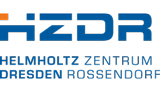Department of Reactive Transport
In the Reactive Transport Department we study the heterogeneity of material surface reactivity, including sorption and dissolution reactions and material degradation. We use experimental and numerical methods to quantify and predict surface reaction rates using rate maps. Transport in complex porous materials is another important aspect of our work. We develop conservative and reactive radionuclide tracers using our cyclotron laboratory and apply positron emission tomography (PET). We use and develop numerical methods for transport analysis at the pore scale and above. Our research is motivated and driven by applications in nuclear safety research and we provide critical links to earth, environmental and materials sciences.
Latest Publication
Pulsating dissolution of crystalline matter: A transport- or surface-controlled process?
Keywords: Surface reactivity; Pulsating dissolution; Kinetic Monte Carlo; Reactive transport; Calcite
Related publications
-
Data publication: Pulsating dissolution of crystalline matter: A transport- or …
ROBIS: 37369 HZDR-primary research data are used by this (Id 37368) publication
-
 Geochimica et Cosmochimica Acta 371(2024), 189-198
Geochimica et Cosmochimica Acta 371(2024), 189-198
DOI: 10.1016/j.gca.2024.02.008
Cited 1 times in Scopus
Team
Reactive Transport
Head/ Administration | |||||
| Name | Bld./Office | +49 351 260 | Position/Tasks | ||
|---|---|---|---|---|---|
| Fischer Prof. Dr., Cornelius | L9.3/212 | 4660 | c.fischer | Head of Department | |
| Gerstner, Katrin | L9.3/217 | 4601 | k.gerstner | Secretary Reactive Transport / Neuroradiopharmaceuticals Research Site Leipzig | |
| Pedrosa Gil, Nadja | L9.3/221 | 4690 | n.pedrosa-gil | Business administration Reactive Transport Business administration Neuroradiopharmaceuticals | |
Employees | |||||
| Name | Bld./Office | +49 351 260 | Position/Tasks | ||
| Becker, Alexandra | L9.3/211 | 4692 | a.becker | PhD student | |
| Eren, Ismail | L9.3/211 | 4692 | i.eren | PhD Student | |
| Gouatieu Dongmo, Elvira | L9.3/211 | 4692 | e.gouatieu-dongmo | PhD Student | |
| Kulenkampff Dr., Johannes | L9.3/202 | 4663 | j.kulenkampff | Research Scientist | |
| Lippold Dr. habil., Holger | L9.3/401 | 4672 | h.lippold | Research Scientist | |
| Lösel, Dagmar | L9.3/402 | 4673 | d.loesel | Laboratory technician | |
| Schöngart, Jann | L9.3/222 | 4658 | j.schoengart | PhD Student | |
| Schößler, Claudia | L9.3/402 | 4674 | c.schoessler | Chemical laboratory technician | |
| Zhou, Wenyu | L9.3/211 | w.zhou | Doktorand | ||
Other employees | |||||
| Name | Bld./Office | +49 351 260 | Position/Tasks | ||
| Franke Dr., Karsten | L9.3/318 | 4629 | k.franke | Research scientist | |
Address
Department of Reactive Transport
Institute of Resource Ecology
Helmholtz-Zentrum Dresden-Rossendorf e. V. (HZDR)
Forschungsstelle Leipzig
Permoserstr. 15
04318 Leipzig
Germany

